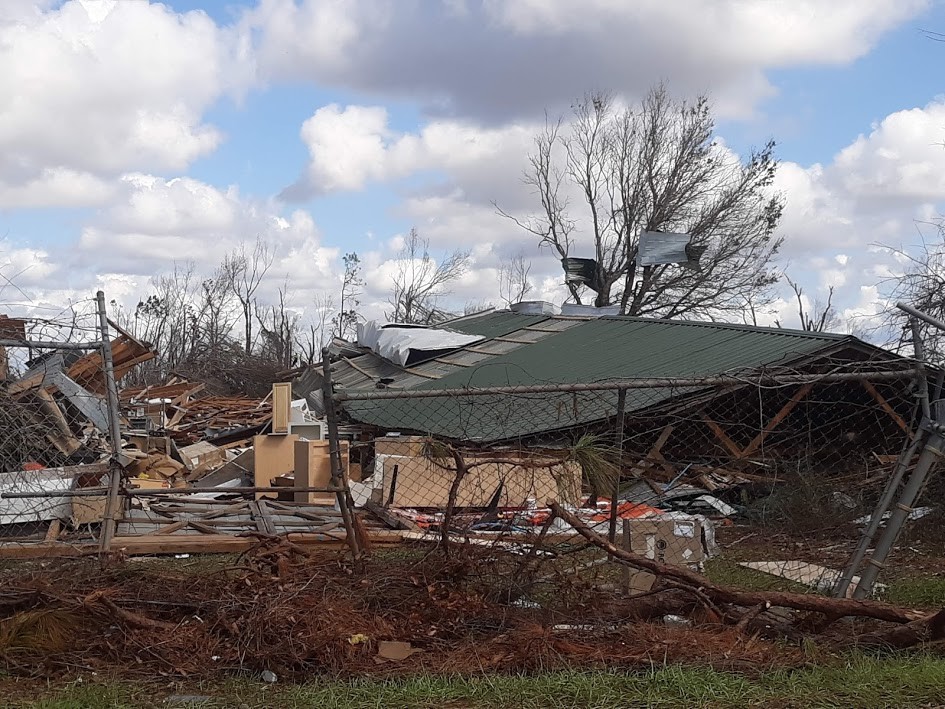Hurricane Michael Survivors Marianna Florida.
Helping the victims of Hurricane Michael..
Helping Hurricane Michael Survivors in Marianna Florida. On of the First Stops I went to go help with the aid of a FHP Trooper who told me where. To go ( A huge thank you to Those FHP Troopers) .. This was my first stop in Mariana in the Panhandle This was a church that looked empty.. Thanks to two local FHP Troopers they told me about them and even guided me there.. The room was bare not many donations at this time but we fixed that ! They are down but they are in good spirits and they are true survivors..
Hurricane Michael was the third-most intense Atlantic hurricane to make landfall in the United States in terms of pressure, behind the 1935 Labor Day hurricane and Hurricane Camille of 1969. It was also the strongest storm in terms of maximum sustained wind speed to strike the contiguous United States since Andrew in 1992. In addition, it was the strongest storm on record in the Florida Panhandle, and was the fourth-strongest landfalling hurricane in the contiguous United States, in terms of wind speed.
Deadly Storm..
The thirteenth named storm, seventh hurricane, and second major hurricane of the 2018 Atlantic hurricane season, Michael originated from a broad low-pressure area that formed in the southwestern Caribbean Sea on October 2. The disturbance became a tropical depression on October 7, after nearly a week of slow development. By the next day, Michael had intensified into a hurricane near the western tip of Cuba.
As it moved northward. The hurricane strengthened rapidly in the Gulf of Mexico.
Reaching major hurricane status on October 9, peaking at a Category 4 hurricane on the Saffir–Simpson scale. Approaching the Florida Panhandle, Michael attained peak winds of 155 mph (250 km/h) as it made landfall near Mexico Beach, Florida. On October 10, becoming the first to do so in the region as a Category 4 hurricane, and making landfall as the strongest storm of the season. As it moved inland, the storm weakened and began to take a northeastward trajectory toward Chesapeake Bay, weakening to a tropical stormover Georgia.
And transitioning into an extratropical cyclone off the coast of the Mid-Atlantic states on October 12. Michael subsequently strengthened into a powerful extratropical cyclone and eventually impacted the Iberian Peninsula, before dissipating on October 16.
The Aftermath..
By October 18, at least 50 deaths had been attributed to the storm. Including 35 in the United States and 15 in Central America. Insurance losses due to Michael in the United States were estimated between $8–11 billion (2018 USD).[1] Losses to agriculture and timber alone exceeded $3.7 billion.[2][3] As a tropical depression, the storm caused extensive flooding in Central America. In concert with a second disturbance over the eastern Pacific Ocean. In Cuba, the hurricane’s winds left over 200,000 people without power as the storm passed to the island’s west. Along the Florida panhandle, the cities of Mexico Beach and Panama City suffered the worst of Michael.
With catastrophic damage reported due to the extreme winds and storm surge. Numerous homes were flattened and trees felled over a wide swath of the panhandle. A maximum wind gust of 129 mph (208 km/h) was measured at Tyndall Air Force Base near the point of landfall. As Michael tracked across the Southeastern United States, strong winds caused extensive power outages across the region.
